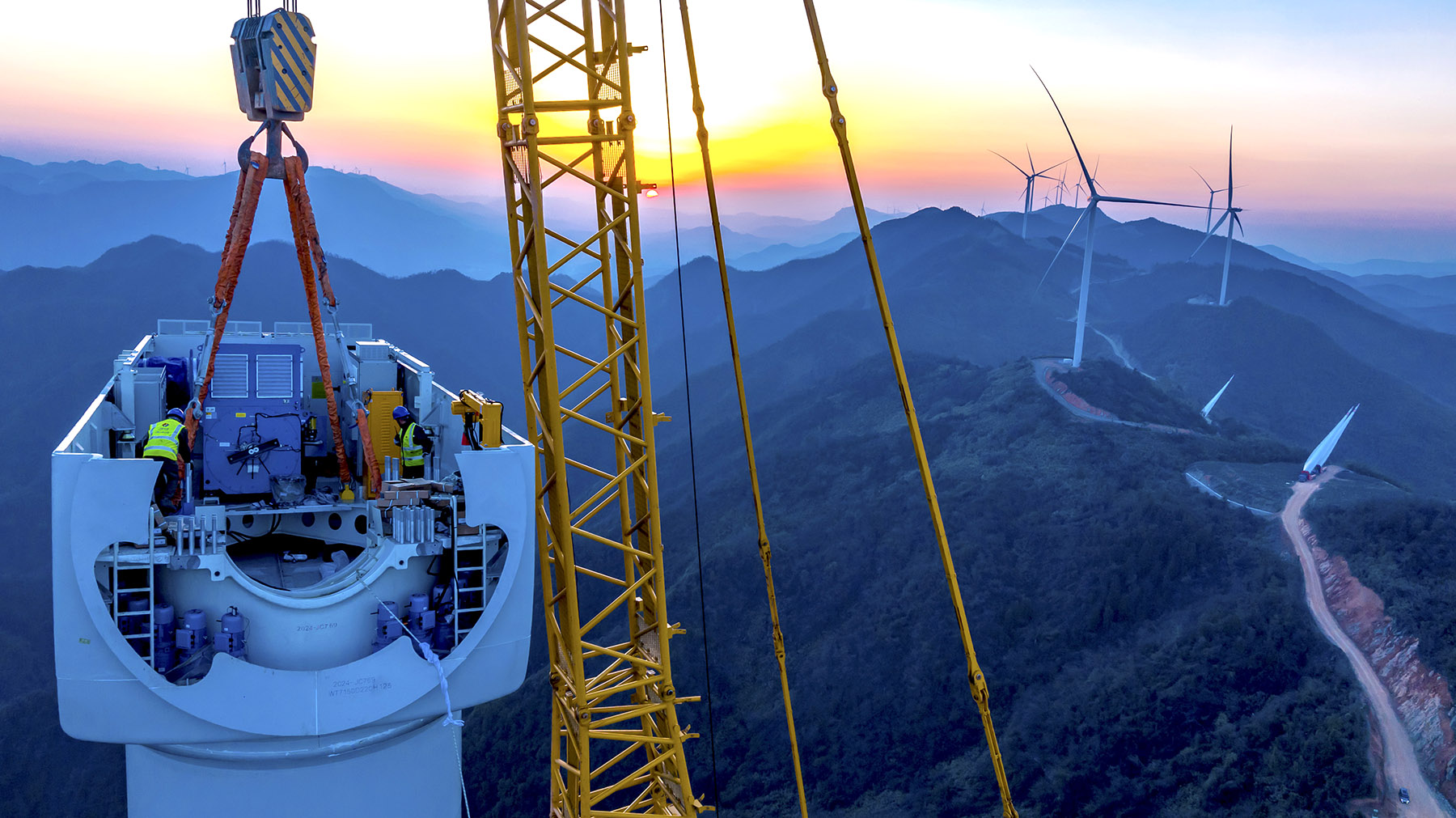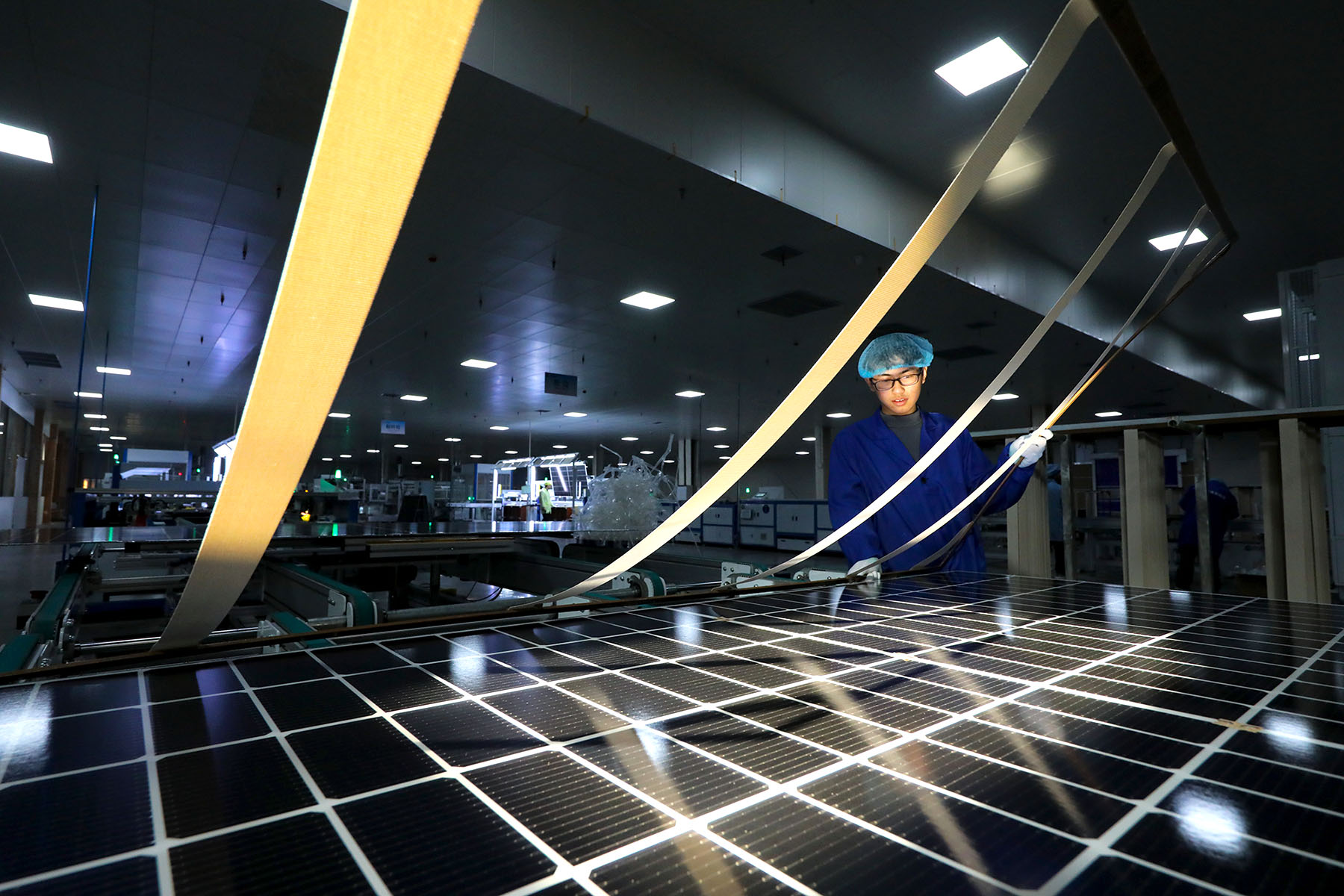Higher utilization of renewables, more private sector participation to expedite growth

China's energy sector is poised for further growth this year, fueled by favorable policies that will expedite the country's shift toward renewable energy sources, even as it navigates challenges like demand-supply imbalances and trade barriers, said experts.
This growth is not only evident in increased installed capacity, but also in the utilization of renewable energy, enhanced private sector involvement in major projects, advancements in technology research and development, and the active overseas operations of businesses, they said.
In recent years, the energy sector has grappled with significant challenges stemming from a pronounced demand-supply imbalance, resulting in issues like pricing fluctuations and inventory concerns.
READ MORE: Biomass, hydropower set for long term plays
Therefore, a series of policies focusing on supply-side reforms in solar and wind power have been introduced since the end of 2024.Notably, the annual Central Economic Work Conference in December emphasized the establishment of a modern industrial system, calling for efforts to tackle price-centered hyper competition amid demand-supply imbalances.
"Since the latter part of the year, China has been actively driving the development and reform of the new energy sector, including supply-side reforms in solar power and demand-side reforms in wind power. By 2025, we anticipate the introduction of more new energy reforms with a growth-oriented approach," said Ken Liu, head of mainland and Hong Kong utilities and renewables research at financial services provider UBS.
Wang Peng, a professor at North China Electric Power University, projects that by 2025, China's combined wind and solar installed capacity will reach approximately 1.6 billion kilowatts. The proportion of non-fossil energy consumption is expected to surpass 21 percent by end-2025 and exceed 25 percent by 2030. In the medium term, there will be a noticeable shift toward electrification of end-use energy consumption, transitioning to electro-hydrogen combination in the long run.
"Future energy use will witness accelerated electrification across industries, construction, transportation, agriculture and other sectors, with end-use electrification levels projected to reach nearly 30 percent by 2025 and 34 percent by 2030. Electricity is poised to become the dominant end-use energy source, with hydrogen energy showing promising innovative development potential and anticipated increased role in end-use energy consumption transformation," Wang said.
He said the new energy law, effective Jan 1, also signifies a shift toward a more market-oriented approach in energy investment and operations, unlocking substantial commercial opportunities. "The country is encouraging private companies to invest in energy development, utilization, and infrastructure construction in compliance with the law. Over the next decade, investments in key energy projects are poised to remain at the trillion-yuan level."
China has made significant progress in the development of renewable energy, with the installed capacity of wind and solar power totaling 1.35 billion kW as of end-2024. This accomplishment fulfills the country's commitment made at the Climate Ambition Summit six years ahead of schedule, according to the National Energy Administration.
Newly increased renewable energy installations in China surpassed 300 million kW last year, constituting over 85 percent of all new installations, while the energy self-sufficiency rate was maintained above 80 percent, said the NEA.

At present, the national wind power installed capacity stands at around 510 million kW, and solar power installed capacity at approximately 840 million kW. Their utilization rates exceed 95 percent.
Meanwhile, China is intensifying efforts to bolster energy infrastructure construction, initiating 194 energy and power facility renewal projects. Advanced technologies continue to set new benchmarks, exemplified by the production of the world's largest 26-megawatt offshore wind turbine unit in Fujian province, and the constant record-breaking solar cell efficiencies. China's nuclear power capacity, both operational and under construction, has surged to the global forefront, underscoring China's pivotal role in driving global energy transformation and battling climate change, the NEA said.
Francesco La Camera, director-general of the International Renewable Energy Agency, highlighted China's essential role in leading the global shift toward sustainable practices.
"China is providing the world the panel, the blade, storage facilities at a reasonable price … the country is pushing the global energy transition," said La Camera.
China has to date contributed over 80 percent of photovoltaic modules and 70 percent of wind power equipment. Over the past decade, average power costs per kilowatt-hour of wind and solar power projects in China have fallen by over 60 percent and 80 percent, respectively, according to the NEA.
Amid China's rapid development, the renewable energy sector is confronted with significant challenges, with one being export obstacles stemming from geopolitical conflicts.
"China's renewable energy industry is poised to encounter substantial geopolitical hurdles. Political uncertainties following elections in various nations may trigger unforeseen policy shifts. Newly elected administrations, influenced by diverse political factions, often exhibit varying stances toward energy projects initiated by previous governments. This dynamic can lead to delays in wind and solar investments previously aligned with Chinese firms, creating dilemmas where substantial investments in finance, manpower, and technical resources may be challenging to recoup, thereby impeding project advancement," said Lin Boqiang, head of the China Institute for Studies in Energy Policy at Xiamen University.
Lin said that escalating geopolitical tensions have underscored the significance of critical mineral resources vital to the new energy sector. The surge in resource nationalism has elevated the issue of securing critical minerals for the development of equipment such as electric vehicle batteries, intensifying their role in geopolitical rivalries.

While China holds a prominent position in the global renewable energy arena and exhibits a substantial demand for critical minerals, he said the industry's reliance on foreign sources for raw materials poses challenges. Despite expertise in extracting and processing specific critical minerals like rare earth elements, China's domestic reserves of critical minerals are limited.
"In addition, forthcoming trade barriers are expected to heighten, impacting the export of Chinese renewable energy products. Despite notable advancements in sectors such as photovoltaics, wind power, and electric vehicles, China faces trade protectionist measures from countries like the United States and the European Union. These measures, encompassing tariffs and technology-related barriers, pose significant hurdles to exporting Chinese products and expanding the industry internationally."
Lin said that by conducting in-depth research on local demand, customizing products accordingly, localizing production, setting up sales and service networks tailored to specific regions, and expanding trade reach, companies can strengthen their market position.
Moreover, substantial investments in technology research and development, the cultivation of interdisciplinary teams, and a focus on improving product efficiency and performance while overcoming technological obstacles can drive innovations and increase Chinese companies' competitiveness.
Diversifying the investment destination also stands out as a solution for Chinese enterprises to mitigate geopolitical risks. This necessitates establishing factories in regions outside of the areas heavily influenced by the US' or the EU's tariffs, and areas that are characterized by high energy demand and receptivity to renewable products.
ALSO READ: Marine economy lifting energy reserves, trade
BloombergNEF said that Chinese solar manufacturers had established production facilities in Indonesia last year, with a capacity of 6 gigawatts for solar cells and 15 GW for modules.
"Indonesia currently falls outside the US' new scope of anti-dumping and anti-subsidy tariffs imposed on four Southeast Asian countries. Indonesia also mandates a certain level of local manufacturing requirements in foreign-invested solar projects, although these local content requirements were eased last year," said Tan Youru, a solar analyst with BloombergNEF.
Additionally, Chinese investments in renewable energy across the Middle East have been on the rise. A recent report by global accounting firm EY revealed that Chinese investments in solar and wind energy in League of Arab States economies surpassed $13 billion between 2018 and 2023, constituting 24 percent of total investments. The report said Chinese companies are actively expanding their footprint in the renewable energy value chain.
The domestic market also grapples with profitability challenges stemming from demand-supply imbalances. For instance, the photovoltaic industry has witnessed substantial production growth in key components like polycrystalline silicon, silicon wafers, cells, and modules, alongside significant price declines. Despite these challenges, there are signs of improvement, with procurement prices stabilizing and some projects witnessing minor price increases since mid-October, indicating a trend toward stability across the industry chain, the China Photovoltaic Industry Association said.


